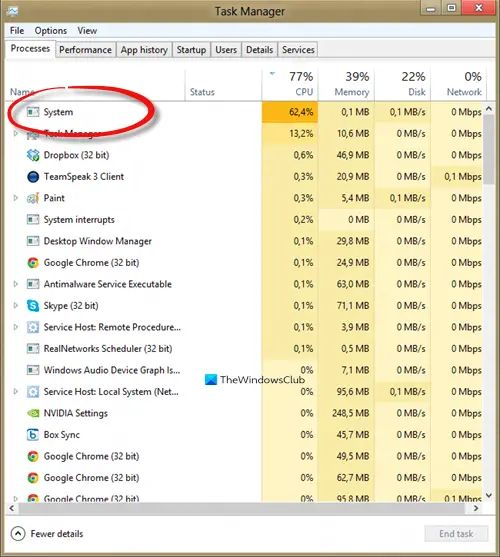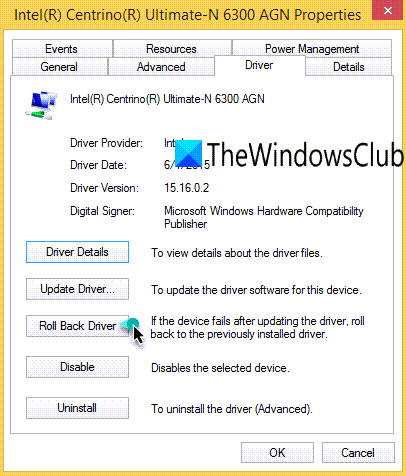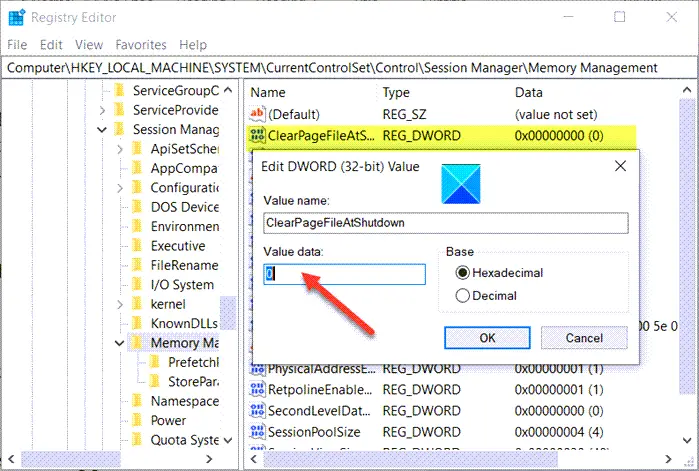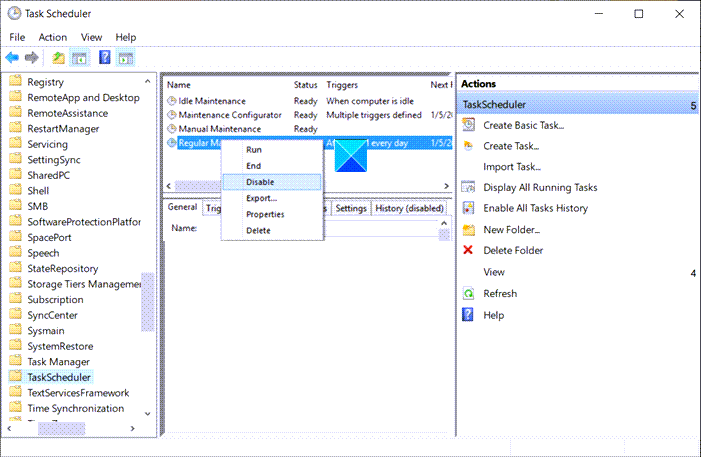The System process can be viewed as a special kind of process that hosts threads that only run in kernel mode. Its related file name is ntoskrnl.exe and it is located in C:\Windows\System32\ folder. It is responsible for various system services such as hardware abstraction, process and memory management, etc.
At times, the System process may display a high disk or CPU usage for a few minutes. This is temporary and should not worry you. But if it persists frequently, you may need to look at a few things.
System process High Disk or CPU usage in Windows 11/10

Different factors can cause a change in the performance of your Windows device. These include recent updates, changes in the device driver versions, etc. You can try these solutions to fix the problem.
- Update old drivers or roll back to the earlier update
- Clear the Page file at shutdown
- Don’t use a Power saver plan
- Use SysInternals Process Explorer
- Disable Idle task
- Use Event Tracing for Windows to capture CPU sampling data
Let’s cover the above solutions in a bit of detail!
1] Update old drivers or roll back to the earlier update
Drivers are programs that control particular devices connected to your motherboard. So, keeping them up-to-date may help in eliminating any compatibility issues or bugs that cause increased CPU usage.

On the other hand, if you find that the new update is interfering with the normal functioning of your PC and causing High Disk or CPU usage, consider rolling back to the earlier version of the driver.
2] Clear the Page file at shutdown
Open the Registry Editor and navigate to the following path address –
HKEY_LOCAL_MACHINE\SYSTEM\CurrentControlSet\Control\Session Manager
Find the Memory Management folder.
Next, right-click the ClearPageFileAtShutDown and select Modify option.

Then, in the Edit DWORD Value screen that appears, change the value of ClearPageFileAtShutDown from 0 to 1 and click on OK.
This will clear Page File at every shutdown and lower the high RAM usage in Windows 11/10.
3] Don’t use a Power saver plan
Some power settings throttle the speed of the CPU, irrespective of the device in use. As such, it becomes necessary to check your Power Options. Type Edit Power Plan in the Search bar and hit Enter. Once open, click Power Options in the address bar at the top of the window.
Click Show additional plans drop-down button, then change your Power Plan. Don’t use a Power Saver plan – Use Balanced or High Performance.
Now open Task Manager again to see if CPU usage returns to normal.
Read: How to restore missing Default Power Plans in Windows
4] Use SysInternals Process Explorer
SysInternals is an advanced system utility that can be used to identify the driver that is causing high CPU usage in Windows 11/10. Run the program as an administrator and locate the System in the list of running processes. Then, right-click it and choose the Properties option.
Next, switch to the Threads tab. Sort the list of modules loaded by the kernel by the rate of CPU usage (CPU column). Note down the name of a component or a driver in the Start Address column, causing high load, and terminate it.
Hopefully, this should help you troubleshoot.
Fix: NTOSKRNL.exe BSOD on Windows
5] Disable Idle task
You can disable it via Task Scheduler easily. Just launch it and navigate to Microsoft.

Then, choose the Windows sub-folder under it.
Expand the MemoryDiagnostic folder > TaskScheduler and select RunFullMemoryDiagnostic from the right-pane. Right-click it and choose Disable option to stop the process.
6] Use Event Tracing to capture CPU Sampling data
Event Tracing for Windows enables the consistent, straightforward capture of kernel and application events. You can identify and diagnose system and application performance issues by capturing and presenting selected events. Thereafter, you can follow a desired course of action to correct the errant behavior. This method is more suitable for IT admins.
Related: NTOSKRNL.exe high CPU, Memory & Disk usage problem
All the best.
Why is the System making my disk usage so high?
High disk usage can occur if your system handles extensive read/write operations from large files or experiences high memory paging activity. Background processes, insufficient RAM, or fragmented files may also contribute to this issue. Monitoring task manager activity or using disk cleanup tools can help identify and resolve high disk usage problems.
Why is my System process using so much CPU?
A system process may use excessive CPU due to outdated or suboptimal drivers, which manage hardware devices. These drivers can cause compatibility issues or bugs, increasing CPU usage. To resolve this, regularly update your drivers to ensure optimal performance and reduce unnecessary CPU load on your system.
Leave a Reply